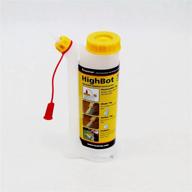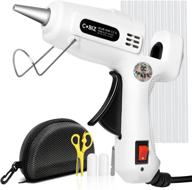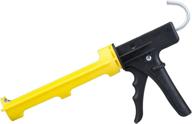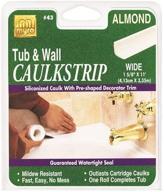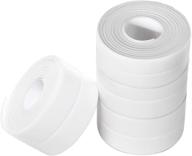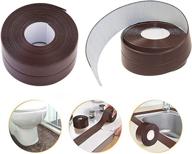Choosing the Right Caulk for the Job
When it comes to caulking, using the right product for your specific application is crucial for getting professional-looking, long-lasting results. The type of caulk you need depends on factors like the materials being sealed, whether the area is exposed to moisture, and desired flexibility.
Main Types of Caulk
There are three major categories of caulk to choose from:
- Acrylic Latex - Water-based and flexible when dry. Ideal for indoor use sealing gaps along trim, baseboards, and joints between different materials. Acrylic latex works best where slight movement is expected.
- Silicone - Flexible sealant that withstands temperature extremes. Best for areas exposed to lots of moisture like bathrooms, kitchens, plumbing fixtures, and exteriors.
- Butyl Rubber - A plastic-like sealant useful for windows and doors. Provides a waterproof, insulating seal.
Factors to Consider
Selecting the optimal caulk involves evaluating:
- Application Surface - Is it porous or non-porous? Plastic, wood, metal, masonry?
- Exposure to Water - Will the caulked area regularly get wet?
- Indoor or Outdoor Use?
- Need for Flexibility - Is expansion and contraction expected?
- Appearance - Any color preferences?
| Project | Recommended Caulk |
|---|---|
| Interior trim, baseboards, crown molding | Acrylic latex |
| Kitchen, bathrooms | Silicone |
| Window and door frames | Butyl rubber |
| Siding, masonry cracks | Acrylic latex or polyurethane |
This table summarizes the ideal caulk types for common projects:
Joint Preparation
Properly preparing surfaces is vital for achieving long lasting seals. Follow these tips:
- Clean all joints thoroughly - remove old caulk, dirt, dust and grease
- Ensure joints are dry before caulking
- Use backing rod for wider gaps to control caulk depth
- Apply primer if needed for certain surfaces like metals
With the right caulk and proper application, you can seal joints and gaps for a watertight, finished look.
Types of Caulk - Acrylic, Silicone, Butyl Rubber
When sealing gaps, cracks and joints in your home, knowing the differences between acrylic, silicone and butyl rubber caulks will ensure you choose the right one for the job.
Acrylic Latex Caulk
Acrylic latex caulking is a versatile, water-based sealant that comes in white and various colors. It's ideal for:
- Indoor use sealing trim, baseboards, corners
- Small gaps between windows, door frames, and molding
- Cracks in drywall
- Sealing around sinks or bathtubs
Acrylic latex remains somewhat flexible when dry. It adheres well to porous materials like wood, drywall, plaster and masonry. Key benefits:
- Water cleanup
- Minimal shrinkage
- Good longevity; lasts 10-30 years
- Affordable
Silicone Caulk
Silicone caulk creates flexible, waterproof seals making it ideal for wet areas prone to mold like:
- Bathrooms - sinks, tubs, showers, tiles
- Kitchens - countertops, backsplashes, sinks
- Outdoors - windows, door frames, siding
- Plumbing fixtures
Silicone adheres well to non-porous surfaces like metal, glass, plastic and vinyl. Benefits include:
- Withstands extreme temps
- Strong and flexible
- Resists UV rays, moisture, and mildew
- Long lifespan - 20-50 years
Butyl Rubber Caulk
Butyl rubber creates an insulating, flexible seal ideal for:
- Sealing moving joints
- Window and door frames
- Small gaps in exterior walls or masonry
It adheres well to wood, concrete, metals, glass and plastics. Key features:
- Stays flexible to handle expansion and contraction
- Provides a waterproof and airtight seal
- Good for noise reduction
- Long lasting - 10-30 years
Choosing the right caulk comes down to matching the sealant to your specific project and needs.
Where to Use Caulk - Kitchen, Bathroom, Windows, Doors
Caulk is an indispensable tool for sealing gaps and cracks to create waterproof, finished looking joints. Here are some of the top places to use caulk around your home.
Kitchen
The kitchen sees a lot of moisture from cooking and cleaning. Use caulk here to prevent water damage and mold growth:
- Along the backsplash and where it meets the countertops
- Around the sink, faucet fixtures, and plumbing
- Sealing tile grout lines
- Perimeter of the dishwasher
- Cracks where the counter meets the wall
Bathroom
Like kitchens, bathrooms require caulk to protect from excess moisture:
- Around the tub, shower, and shower doors
- Sink, faucet, plumbing fixtures
- Between tile joints
- Base of the toilet
- Gaps between tub/shower and walls
Windows and Doors
Caulk windows and doors to seal against air leaks and moisture:
- Perimeter of window and door frames
- Window sills
- Corner joints on window trim
- Around thresholds
Apply exterior grade caulk outside and use interior caulk inside. Ensure any gaps are less than 1/4" wide before caulking.
Using the proper caulk for each project creates long lasting, professional seals.
Caulk Colors - Match or Contrast Your Surfaces
When sealing joints and gaps around your home with caulk, you can choose to match or contrast the caulk color to your surfaces. The option you go with is mainly an aesthetic choice.
Color Matching Caulk
Matching the caulk color to your surfaces creates a seamless look by making the caulk lines less visibly obvious. It's best for minimalist designs. Some examples:
- White caulk for white trim, baseboards, or tiles
- Wood toned caulk for hardwood floors or trim
- Gray caulk for gray grout lines on floor tile
- Green caulk for green bathroom fixtures
Pros of color matching:
- Looks nearly invisible for a streamlined appearance
- Can make projects appear more neat and uniform
Cons:
- Imperfect caulk lines stand out
- More time consuming to find an exact color match
Contrasting Caulk Colors
Going with an intentional, contrasting caulk color is a great option for modern, bold designs. Some ideas:
- Bright white caulk on dark wood
- Black caulk on white marble
- Bronze caulk for silver fixtures
- Red caulk sealing blue tile
Pros of choosing a contrasting caulk color:
- Creates an eye-catching, dramatic effect
- Easier to find complementary colors
- Can highlight or accent the surfaces being sealed
The choice between matching and contrasting caulk colors comes down to your personal preference and the overall look you want to achieve.
Another interesting products
Caulking Tools - Caulk Gun, Knife, Spatula
Having the right caulking tools makes applying caulk much easier and ensures professional looking results. The three essential caulking tools are caulk guns, knives and spatulas.
Caulk Guns
Caulk guns provide an easy, controlled way to dispense caulk from the tube in consistent beads. They come in two main types:
- Standard barrel - A trigger dispenses caulk with manual pressure. Best for smaller DIY projects.
- Smooth rod - Allows smoother, continuous caulk flow with a wheel-advanced plunger. Ideal for bigger jobs.
Helpful tips:
- Cut the tube tip at a 45° angle for optimal caulk flow
- Apply steady, even pressure on the trigger or wheel
- Keep a spare caulk gun for fast color changes
Caulk Knives
Caulk knives are essential for shaping and smoothing caulk beads. They have a rounded notch in the end of the stiff, flat blade.
- Hold at a 30° angle and run along the bead to shape it
- Smooth with the flat side to eliminate ridges
- Clean excess caulk from the blade frequently
Caulk Spatulas
Small, flexible spatulas help ensure a smooth finish in corners and tight spaces. Use them to:
- Force caulk into joints and gaps
- Smooth caulk in detailed areas knives can't reach
- Remove excess caulk
Having quality caulking tools saves time and effort while providing professional looking caulk lines.
Caulk Removal Tips - Heat Gun, Razor Blade, Chemical Solvent
Over time, caulk can crack, peel, discolor or show other signs of aging. Removing old caulk is an important part of maintenance and resurfacing projects. Here are some effective caulk removal techniques.
Heat Gun
A heat gun is an ideal tool for softening old caulk to make it easier to scrape off. Follow these steps:
- Set the heat gun to its lowest setting, about 250°F to 400°F.
- Run the heat gun over the caulk line, keeping it 2-4 inches away.
- After about 10 seconds, you should be able to penetrate the softened caulk with a putty knife.
- Scrape off the liquefied caulk thoroughly.
Be cautious not to overheat surfaces when using a heat gun. Test on an inconspicuous area first.
Razor Blade
For small caulk removal jobs, a simple razor blade can be effective:
- Hold the razor blade at a 45° angle into the caulk bead.
- Apply moderate pressure and slide the blade along the caulk line.
- Repeat until all caulk is removed from the joint.
Take care not to scratch surfaces when scraping with a razor blade.
Chemical Solvents
Caulk dissolving solvents help soften caulk for removal:
- Apply a solvent like acetone or paint thinner along the caulk bead.
- Allow 5-10 minutes for the chemicals to penetrate and break down the caulk.
- Wipe away the softened caulk with a cloth.
Ensure proper ventilation when using chemical solvents. Test on a small area first.
With the right technique and tools, you can effectively remove old caulk to prepare surfaces for fresh, new seals.
Caulk Maintenance - Checking for Cracks, Reapplying
Properly maintaining caulk is important for extending the life of your seals and preventing damage from water leaks and drafts. Here are some tips for keeping caulk in good shape.
Regular Inspections
Examining caulk lines periodically is key to catching issues early. Things to look for:
- Cracks or gaps in the caulk bead
- Signs of shrinking and pulling away from surfaces
- Areas where the caulk has peeled away or bubbled up
- Discoloration or bleeding
- Soft or spongy areas when pressed
Check caulk around tubs, sinks, window frames, doorways, and other joints annually as part of seasonal maintenance.
Reapplying Caulk
Many types of quality caulk will last 10-30 years, but will eventually need replacing:
- Completely remove old caulk and clean the area
- Make any needed repairs to surfaces before recaulking
- Use a high quality caulk recommended for that application
- Carefully apply fresh caulk in a continuous bead
- Tool the caulk with a smoothing tool
Recaulking before the old bead fails helps prevent leaks, drafts, and other issues.
Take Preventative Measures
You can extend caulk life by:
- Caulking correctly the first time
- Using quality caulk designed for the location
- Allowing adequate drying time before exposing to water
- Using backer rod in larger gaps
With regular inspections and prompt maintenance, your caulk can deliver years of reliable seals.
How To Use All Purpose Easy Caulk?
To use All Purpose Easy Caulk, follow these steps:
- Clean the area where you will apply the caulk. Use rubbing alcohol or a household cleaner and let it dry.
- If you are caulking indoors, you can add painters tape to help create clean caulk lines.
- Shake the aerosol can well before use.
- Hold the can at a 45-degree angle and apply the caulk in a smooth, consistent bead.
- Use a caulk smoothing tool or your finger to smooth out the caulk and remove any excess.
- Allow the caulk to dry for at least 24 hours before painting or exposing it to water.
Note that All Purpose Easy Caulk contains silicone additives for greater flexibility and adhesion, and shrinks less for a durable, waterproof seal.
What Surfaces Can All Purpose Easy Caulk Be Used On?
All Purpose Easy Caulk can be used on a variety of surfaces, both interior and exterior. Some of the surfaces where you can apply this caulk include:
This caulk offers strong multi-surface adhesion, and it won't shine through or discolor paint. It also exceeds ASTM C834 standards, and the cured caulk is mold and mildew resistant.






